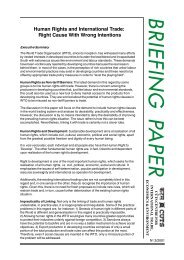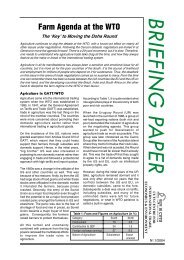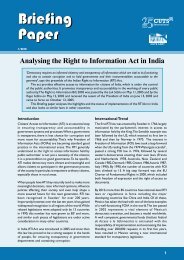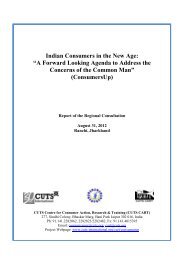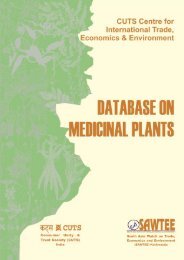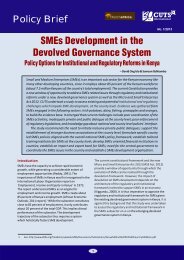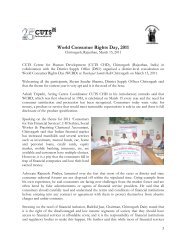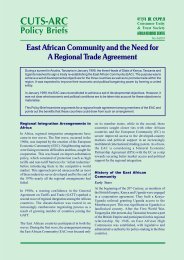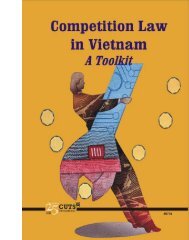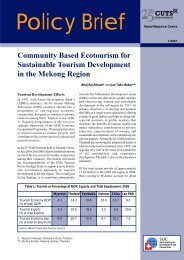Usages of RTI in Rural Rajasthan, India - Consumer Unity & Trust ...
Usages of RTI in Rural Rajasthan, India - Consumer Unity & Trust ...
Usages of RTI in Rural Rajasthan, India - Consumer Unity & Trust ...
Create successful ePaper yourself
Turn your PDF publications into a flip-book with our unique Google optimized e-Paper software.
Use and Potential <strong>of</strong> <strong>RTI</strong> Act (%)In the post-RGR survey, majority <strong>of</strong> service providers (75 percent) said that the <strong>RTI</strong> Act,2005 is capable <strong>of</strong> enhanc<strong>in</strong>g accountability among <strong>of</strong>ficials and also forc<strong>in</strong>g them toma<strong>in</strong>ta<strong>in</strong> their records properly. 44 percent <strong>of</strong> the service providers responded thatthis Act has successfully combated corruption.82 percent <strong>of</strong> the respondents reported that transparency <strong>in</strong> the selection process <strong>of</strong>beneficiaries, decision-mak<strong>in</strong>g process and pubic expenditure has <strong>in</strong>creased. PIOsma<strong>in</strong>ta<strong>in</strong>ed that <strong>RTI</strong> work is putt<strong>in</strong>g extra burden and that they are unable to respondto these requests due to lack <strong>of</strong> human and <strong>in</strong>frastructural facilities at the GramPanchayat level.Steps Taken to Promote Transparency and AccountabilityIn the post RGR survey, 35-40 percent <strong>of</strong> the respondents stated that they had pr<strong>in</strong>tedon the walls <strong>of</strong> Gram Panchayats the entitlements and qualifications <strong>of</strong> beneficiaries<strong>of</strong> the IAY and NREGS and about the <strong>RTI</strong> Act, 2005 for public. 70 percent respondentsreplied that they have also pr<strong>in</strong>ted the annual <strong>in</strong>come and expenditure details <strong>of</strong> theGram Panchayat at its walls.Prevalence <strong>of</strong> Corruption <strong>in</strong> Selected Schemes39 percent agreed that corruption is prevalent <strong>in</strong> the NREGS and that most <strong>of</strong> the<strong>of</strong>ficials responsible for implementation are <strong>in</strong>volved. Rest <strong>of</strong> the respondents did notaccept corruption or ma<strong>in</strong>ta<strong>in</strong>ed that there is no corruption <strong>in</strong> the department. In theIAY, prevalence <strong>of</strong> corruption was admitted by 20 percent <strong>of</strong> the respondents and therest denied. Under SGSY, 31 percent admitted prevalence <strong>of</strong> corruption.42Model Framework for Replication: <strong>Usages</strong> <strong>of</strong> <strong>RTI</strong> <strong>in</strong> <strong>Rural</strong> <strong>Rajasthan</strong>, <strong>India</strong>



